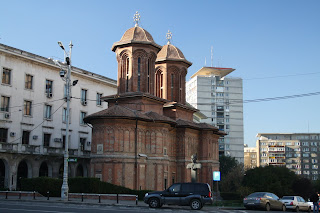
Thursday, December 30, 2010
Tirana News for ex-Residents

Saturday, December 11, 2010
Rant I
Each month of my little 2011 Daily Planner has a quotation; the one for January is this: “Procrastination is like a credit card: it’s a lot of fun until you get the bill.”
I can’t help but to think of our President and Dear Ole Senate Majority Leader – no one told them the Bush tax cuts were going to expire the end of the month! No one told them repealing DADT might take more than a week! No one told them there would be a new Congress sworn in the first part of January! So they had to do the best they could under the circumstances.
Maybe this is what Will Rogers meant when he said he wasn’t a member of any organized party, he was a Democrat.
Sunday, December 5, 2010
Berlin Inspired Musings

Checkpoint Charlie from the old American Sector looking into the Russian Sector. This little guard shack is a reproduction; the original is in a local museum. The Wall was in front of the new buildings.
Friday, December 3, 2010
Ancient Jewelry
 Persian, 300-400 BC, Pergamon Museum.
Persian, 300-400 BC, Pergamon Museum. Assyrian jewelry, about 3000 years old.
Assyrian jewelry, about 3000 years old.
Berlin - Organ Pipes


Sunday, November 21, 2010
Munich - Organ Pipes











Bucharest - Orthodox Churches













Saturday, November 20, 2010
Bucharest - Old City


This has to be one of my all time favorite building additions. When we were redoing our house on Quinn Street in Jackson, because Belhaven was a Historic District, the lady from the City Planning Commission would not allow me to re-use a 9/9 pane window because it had to be different from the original architecture so that one could tell it was an addition or alteration to the exterior. I'm sure that lady would heartily approve of the approach in this photo.
 A very nice awning.
A very nice awning. Covered patio.
Covered patio.
 The concert hall, the Romanian Atheneum (Ateneul Roman) on Benjamin Franklin Street, on George Enescu Square. The George Enescu Philharmonic is headquartered here, and the George Enescu Music Festival is held here. The George Enescu museum is up the street about half a mile in the Cantacuzino Palace. One arrives in Bucharest by airplane at the George Enescu International Airport. Quite a lot of homage for a favorite son.
The concert hall, the Romanian Atheneum (Ateneul Roman) on Benjamin Franklin Street, on George Enescu Square. The George Enescu Philharmonic is headquartered here, and the George Enescu Music Festival is held here. The George Enescu museum is up the street about half a mile in the Cantacuzino Palace. One arrives in Bucharest by airplane at the George Enescu International Airport. Quite a lot of homage for a favorite son. The School of Architecture at the university.
The School of Architecture at the university.
National Bank of Romania.













